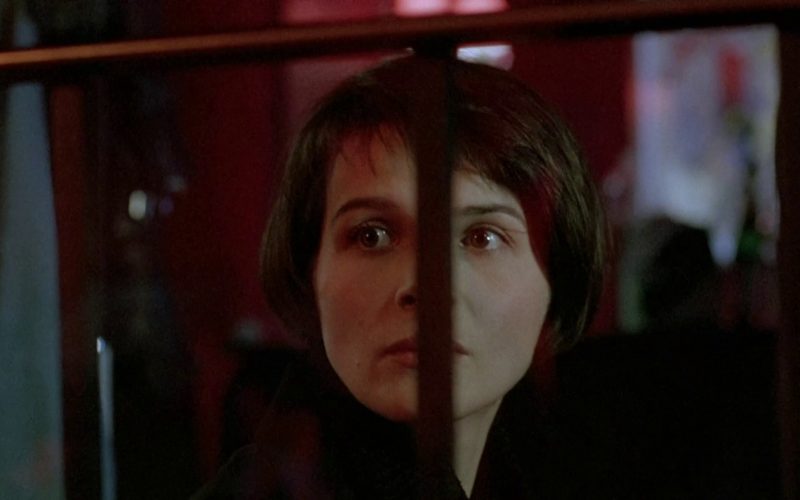Three Colors: Blue (1993).
October 15th 2018 sees the 25th anniversary of the first film in arguably one of the greatest trilogies of all time, three films which explored love, death, grief, age, friendship, sex and revenge. They explored these themes with a passion which speaks to the viewer’s very soul and today remains as true and powerful as ever. They were directed by Polish maestro Krzysztof Kieslowski who set out to make three films based ostensibly around the principles of France’s tripartite motto: Liberty, Equality and Fraternity; and named after the three elements of their tricolour flag.
The first of these films was Three Colors: Blue.
A husband, his wife and their daughter are in a car. It’s been a long journey but they’re relaxed and joking. But then there’s a crash. We know it’s going to happen as we are shown the leaking brake fluid, but of course, they don’t. This isn’t so much a moment of tension as Blue isn’t a thriller per sé, but more a moment of impending tragedy.
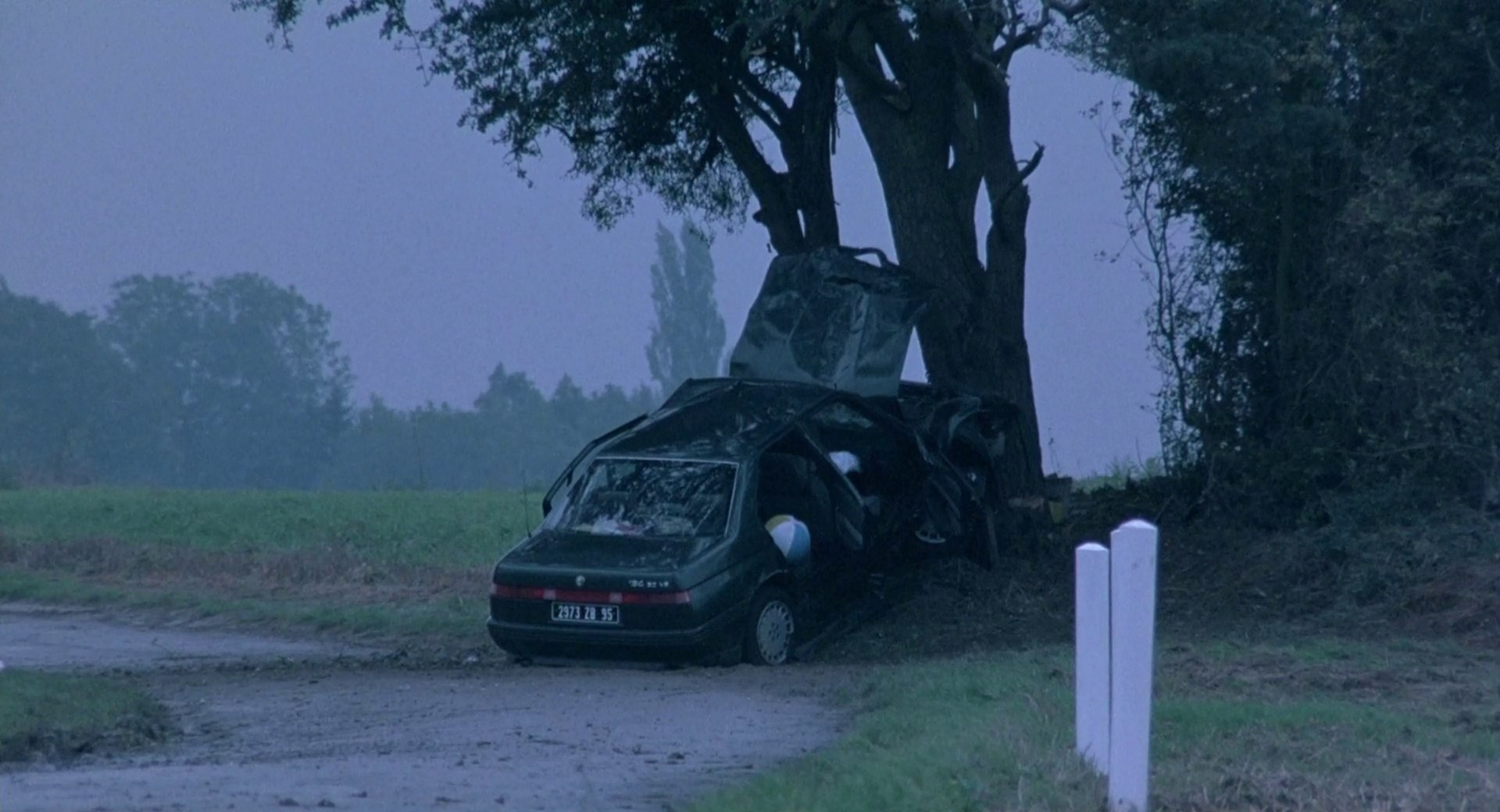
Both the husband and daughter die, leaving Julie the sole survivor. The scene is filmed with a blue tinge. We hear the crash, we see the reaction of a young boy on the side of the road and we hear Julie’s scream from the car. There’s a long shot of the car; the scene is dominated by a dark blue and oppressive sky. This isn’t the bright blue of summer, but the cruel and harsh colour of deepest winter.
Julie is beautifully played by Juliette Binoche. It’s an almost minimalist performance with no histrionics and few tears yet she emotes with her whole body, especially her eyes. Those eyes truly are windows into her soul, a soul ripped apart before us in harrowing close-up as she’s told of her family’s death and the desperate bleakness of her future alone.
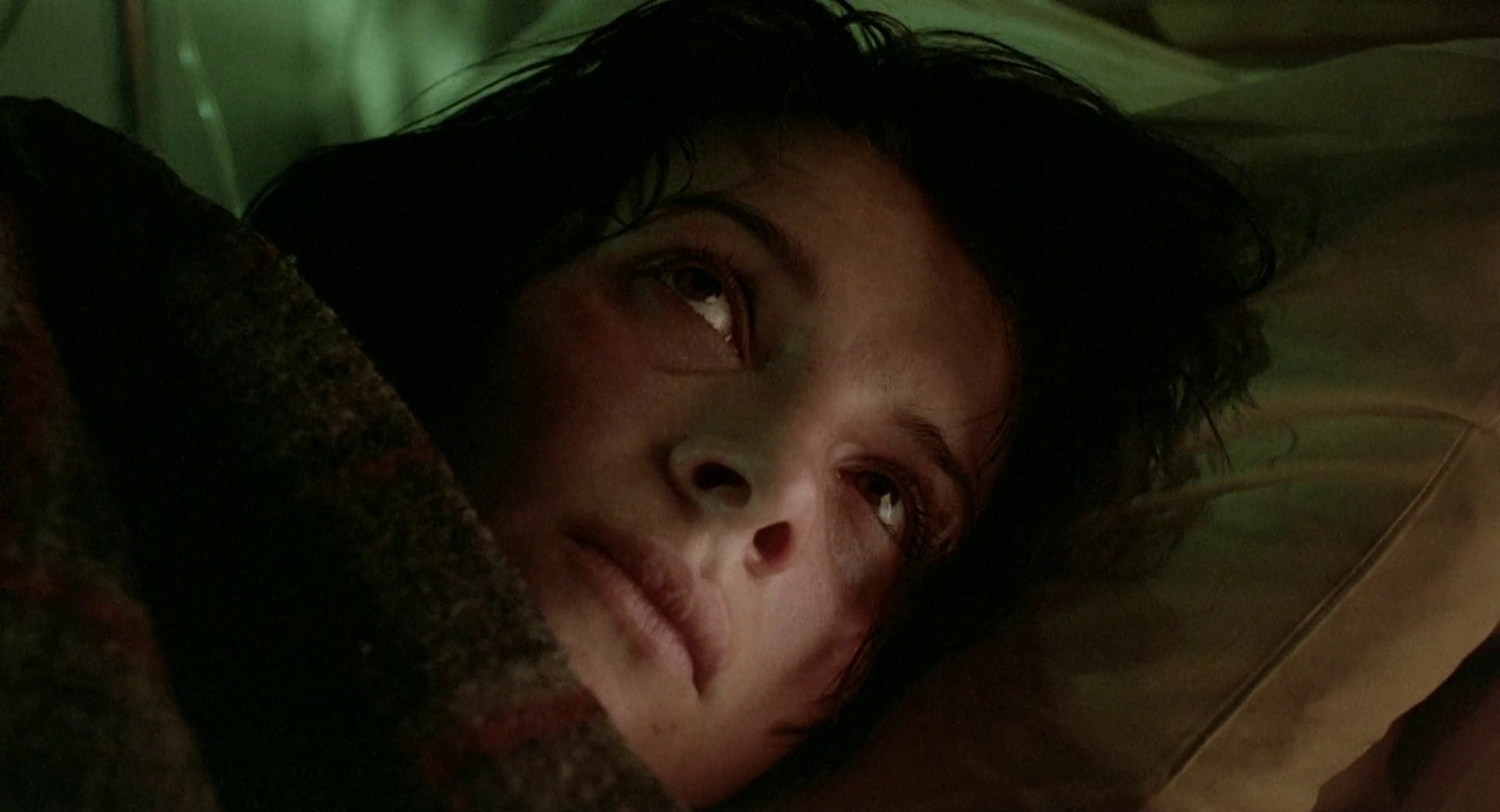
Her first response is to attempt suicide, breaking into the hospital pharmacy and stuffing her face with tablets, but she’s not able to go through with it. Instead of ending her physical life she decides to disengage from her life completely, in effect committing emotional and spiritual suicide. She sells her house, destroys mementos, perceiving belongings as traps;
“Now I have only one thing left to do: nothing. I don’t want any belongings, any memories. No friends, no love. Those are all traps.”
Julie does not cry, not wanting to succumb to the grief that holds her. She is in denial, wanting to feel anything other than grief, be it sexual relief or physical pain, both afford her a momentary distraction and nothing more. In one moving scene, Julie discovers one of her servants crying alone. When asked why she was crying the servant replies, “Because you are not.”

Is this the Liberty that Kieslowski is studying? Freedom from the trappings we gather throughout our lives? Freedom from the pain that life can give us? From the grief that can blister the bubble we create for ourselves? No. For as much as she tries to escape, what she’s actually doing is limiting herself, building a prison around her self. As much as Julie tries to rid herself of the past, she is unable to do that. She is after all, still herself. She’s the same woman, not the cipher she longs to be. She acknowledges this admitting, “I’m like any other woman. I sweat. I cough. I’ve cavities…” At the same time she doesn’t want to be the woman she was, she searches for a freedom that is illusionary.
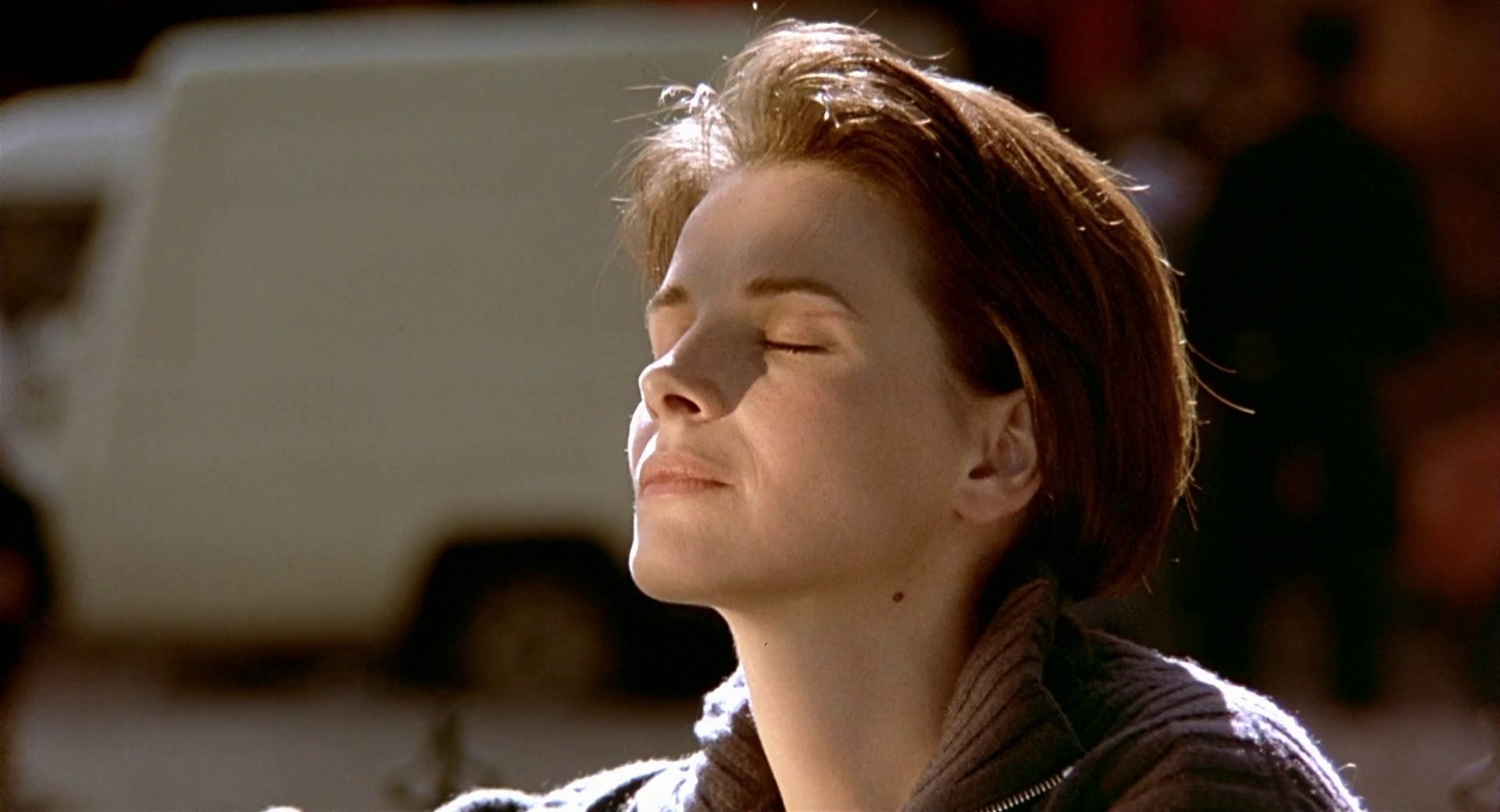
She moves away from her large country house into a new apartment, her only treasure is the light decoration made up of small blue crystals, her only memento of her daughter. She tries to start again, down-scaling her bucolic life as the wife of a famous composer to another more urban existence. In one wonderfully acted scene we see Binoche’s reaction to a fight in the street and up the stairs to her apartment. Kieslowski lingers on her face as the victim bangs on people’s doors (including her own) pleading for help. Her eyes dominate, her fear is pure although it’s possibly as much a fear of the violence as it is of the outside world knocking so loudly and forcefully on her door. Locking the door does not stop the world outside from existing, it doesn’t stop experiences from occurring, it merely puts a temporary barrier up to it.

It also fails to stop her mental and spiritual issues from appearing. There is no bolt that can keep her pain from resurfacing. Grief is never far away, represented by the colour blue and her husband’s final and incomplete symphony. Sometimes these two motifs collide becoming overwhelmingly beautiful and agonising. In the blue glow of the swimming pool, accompanied by the sudden eruption of music, Julie curls up in the water like a foetus in the womb, trying desperately to return to an earlier and easier state. Of course, it doesn’t work. Pain is not so easily discarded.

We know she’s a good woman, she gets up in the middle of the night to help Lucille, her neighbour and exotic dancer, who is distressed after seeing her father in the crowd at the club she works in. In effect she provides to others the emotional support she is denying herself. Then there’s the matter of the family of mice that have invaded her apartment, which, even though they are helpless and exposed, she can’t get rid of. Instead she borrows a cat and it is Lucille who takes on the task of cleaning up the mess afterwards. These two incidents also force Julie to acknowledge the outside world, firstly that there may be someone out there who needs her and secondly, that she may need the help of someone else.
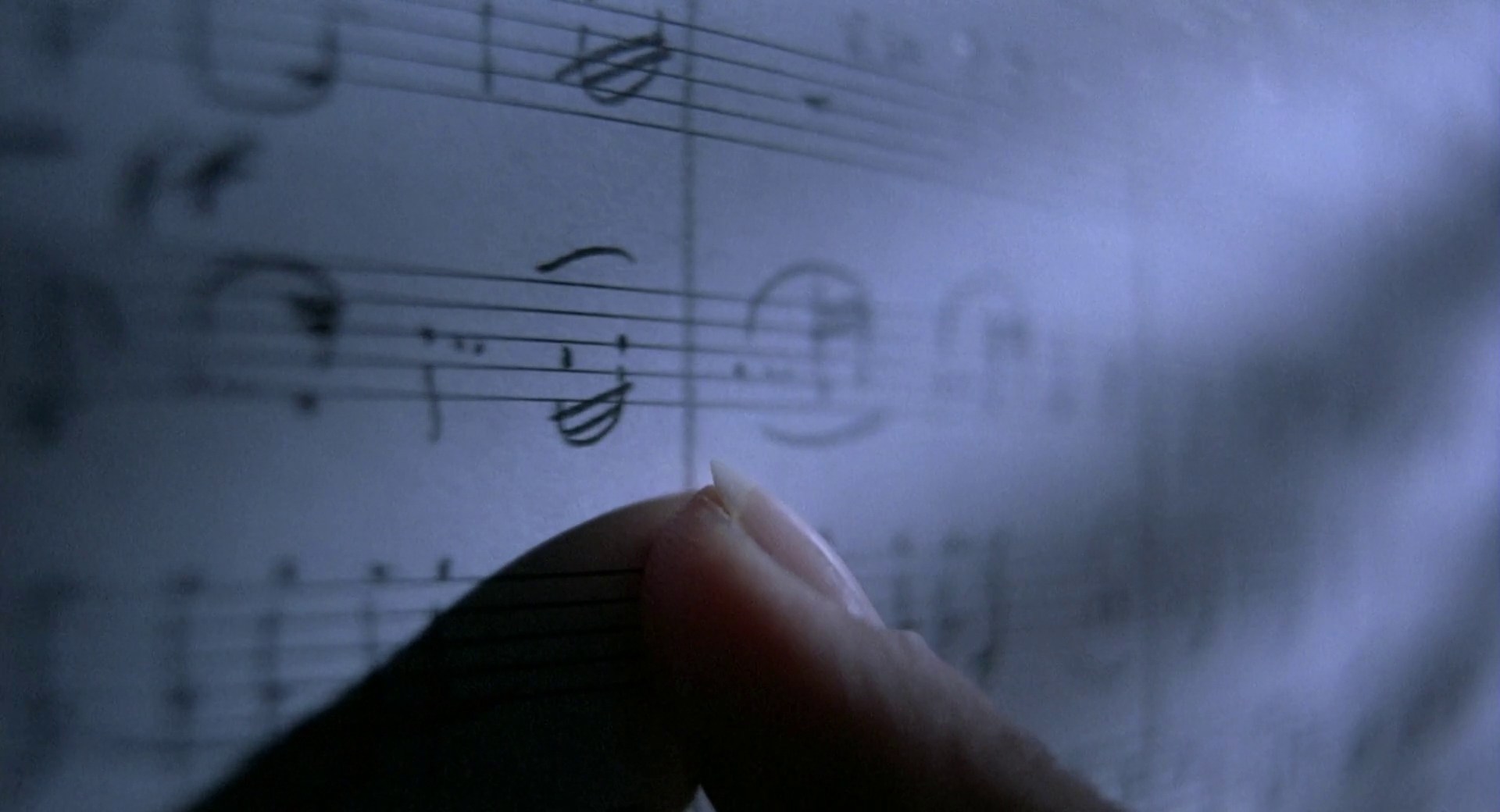
Ultimately she has to realise she can’t escape, she has to accept the grief and, of course, she does so by embracing the music. She meets her old friend Olivier, whom she had slept with shortly after getting out of hospital. Then it was in an attempt to find a way out of her grief, but now it’s a way to accept it. She finishes off the symphony, accepting her responsibility and finally weeps.
This is the true freedom, the liberty, that Kieslowski originally set out to explore. To accept life and then, maybe, to live it.
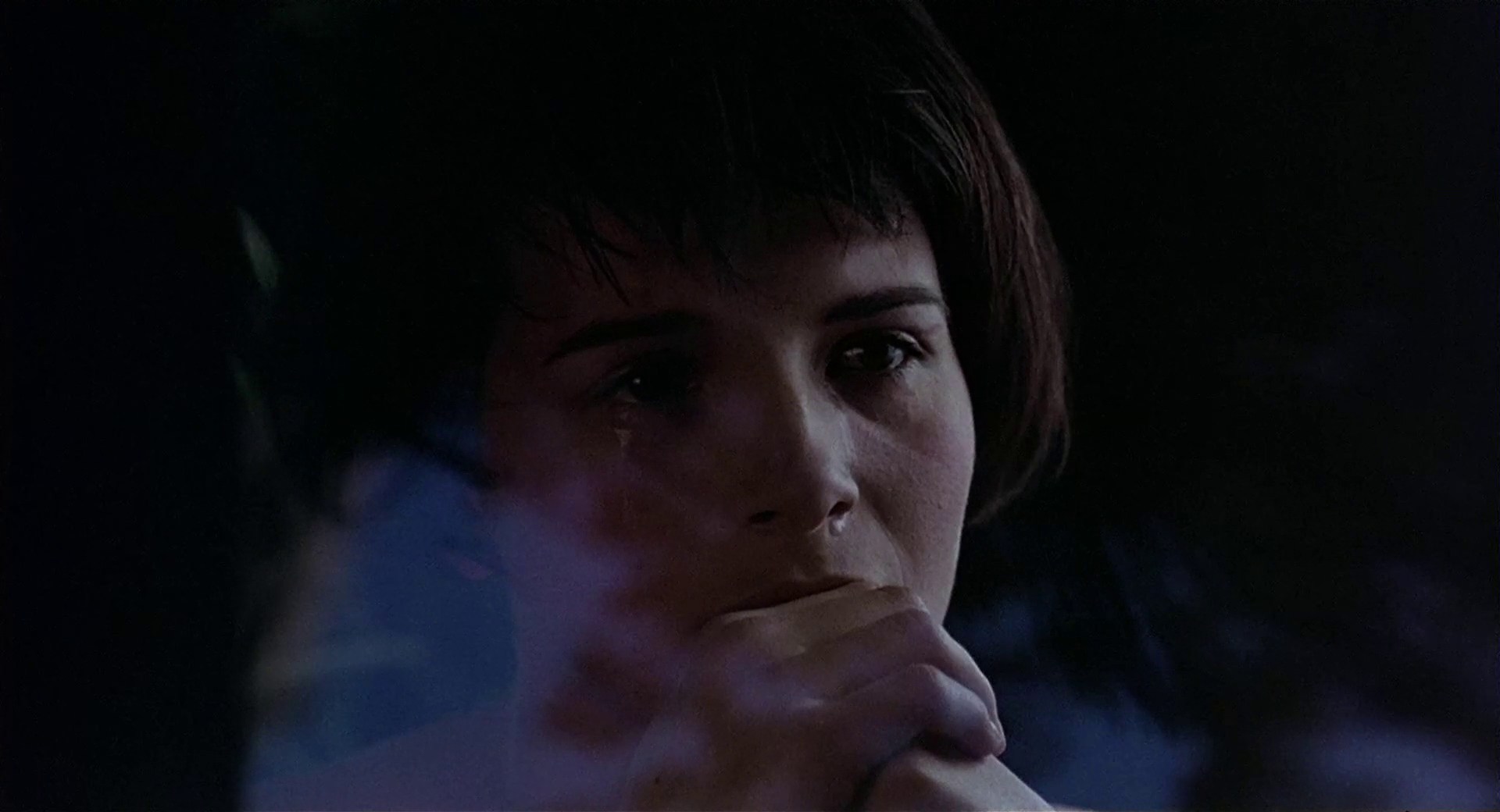
Three Colors: Blue is a beautiful film. It’s duel motifs of colour and music help to perfectly convey the power of grief, from quiet moments of reflection to tidal crescendos of emotional incapacity. It’s about a woman coming to terms with her loss, with the cataclysmic changes in her life and the new and very different responsibilities that come with it. It’s a film that will stay with you long after you’ve seen it. Juliette Binoche’s performance, whilst understated, hits you in the gut as you experience her journey from despair and denial, to the possibility of a future. Blue isn’t a film that veers towards the sentimental or mawkish, it’s not manipulative, it is truth, raw and hopefully liberating truth.
Film ‘89 Verdict – 10/10

